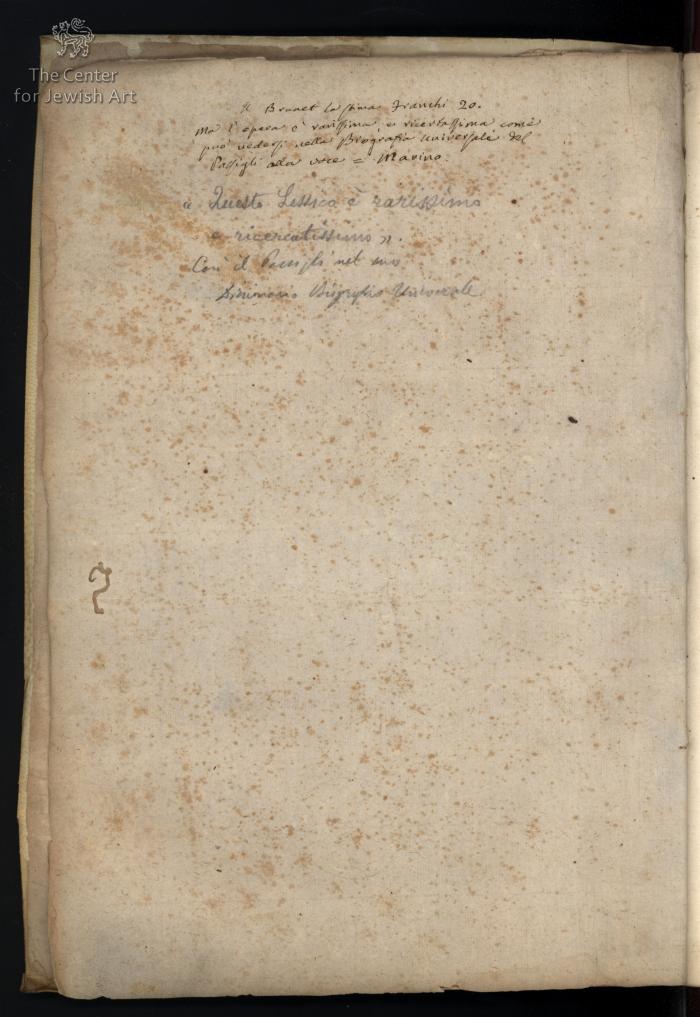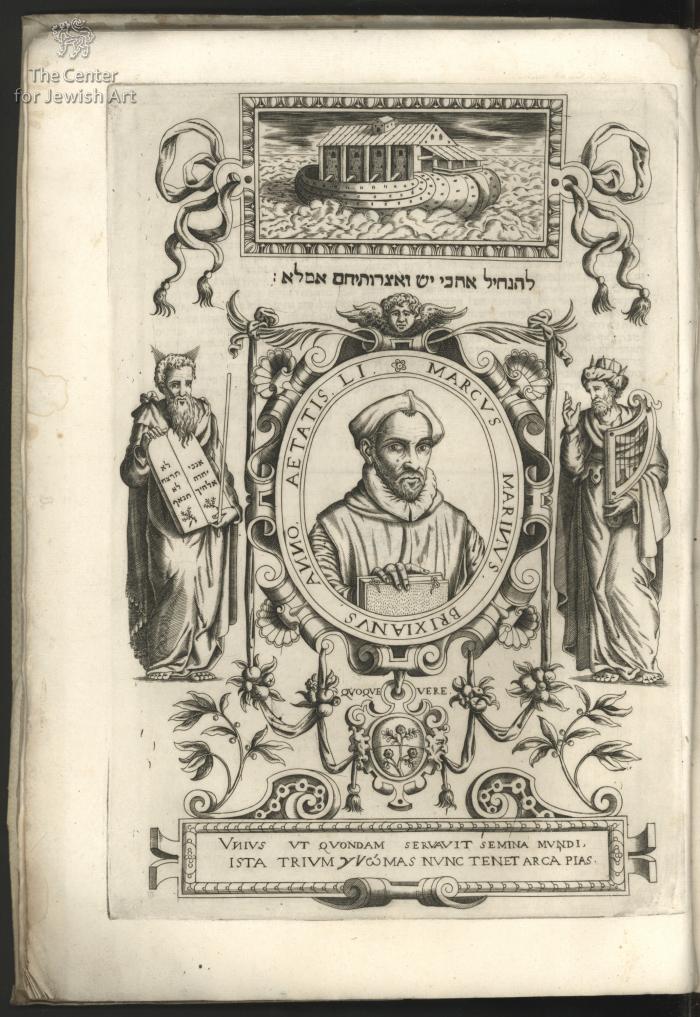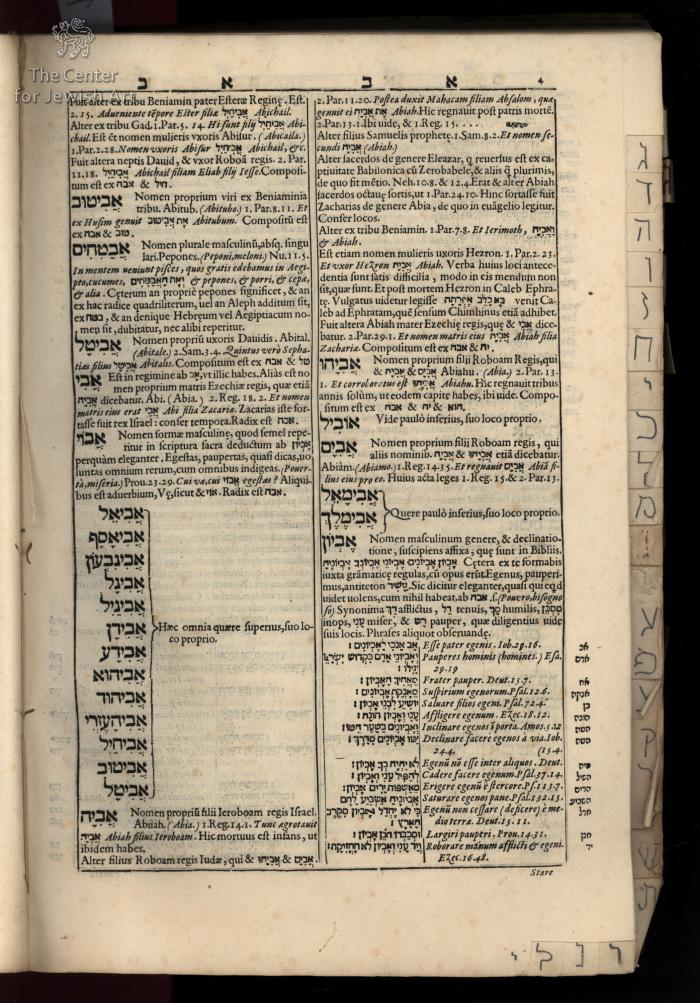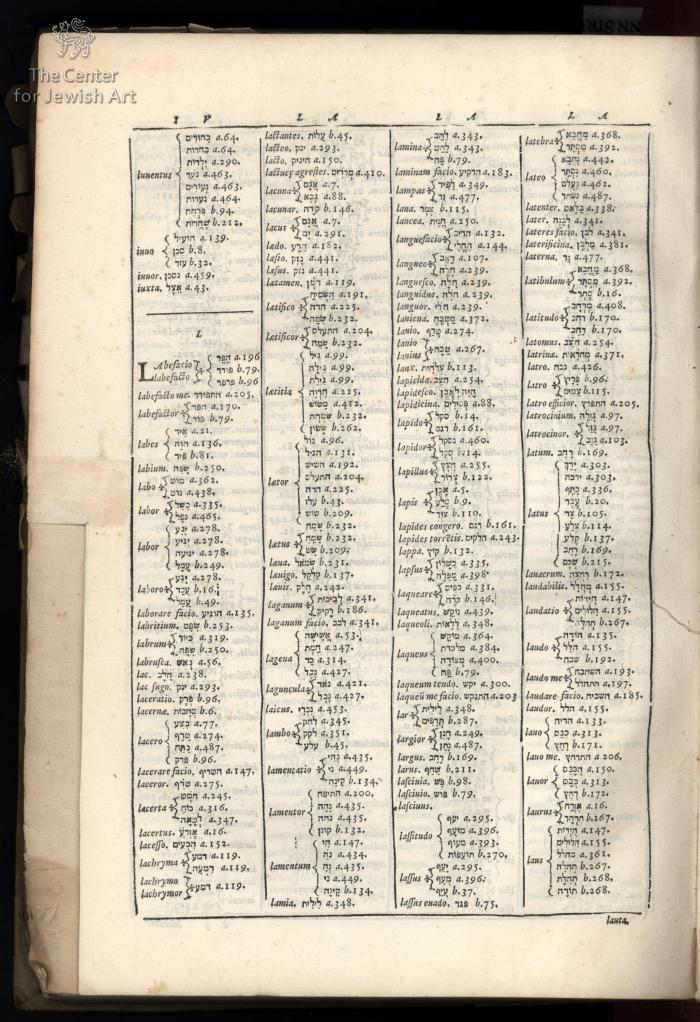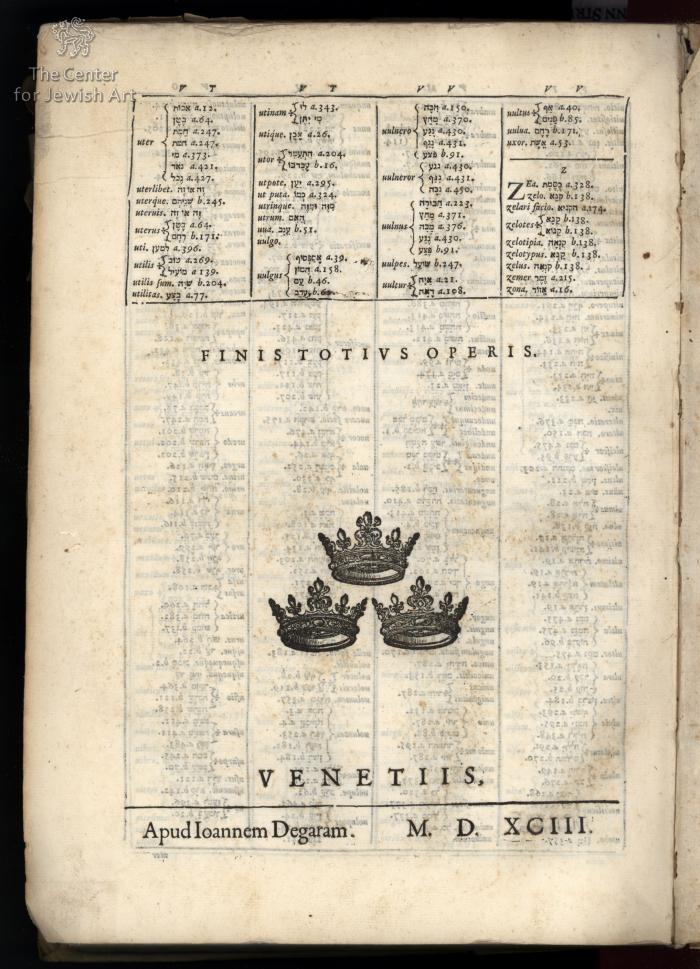Obj. ID: 37630 Teivat Noach / Arca Noe. Thesaurus Linguae Sanctae Novus by Marco Marino of Brixiense (of Brescia), Venice, 1593

sub-set tree:
This text was prepared by William Gross:
Hebrew Latin thesaurus by Cardinal Marco Marino (Marini) Brixiense (of Brescia), (1541 - 1594), a Venetian inquisitor and censor. He is best remembered for his work as the censor of the expurgated Basle Talmud. He was also the author of two Hebrew books, one of them this thesaurus.
Full-page presentation portrait of the author, flanked by the figures of Moses and King David, and topped by a vignette of Noah's Ark. Title page in Hebrew and Latin, with printer's device (three crowns) at bottom.
Giovanni di Gara (active 1564-1610) was known in Venice as the “heir of Bomberg” not only because Bomberg instructed him in Hebrew printing, but also because Di Gara acquired most of Bomberg’s Hebrew types. He was born in Riva del Garda to Christian parents sometime between 1520 and 1530 and moved to Venice with his family as a young boy. He began working at Bomberg’s press as a child. It is believed Di Gara’s first Hebrew books were printed at Bomberg’s own press, since some of them bear the phrase “in the house of Bomberg”. In other early Hebrew books, Di Gara noted when he used Bomberg’s types with the phrase “with the letters of Bomberg”. Over time, this phrase came to mean ‘in the Bomberg style’.
Di Gara worked closely with the press of fellow Venetian Bragadini, as evidenced by the use of his types from 1599 to 1600 and the incorporation of his three-crown printer’s mark (Di Gara’s own printer’s mark was a small single crown). Di Gara employed Jews whenever legally permitted to do so to ensure the accuracy of his Hebrew editions. Books printed under the supervision of Christian typesetters suffered from many errors, whose corrections were costly to the firm.
Di Gara’s press printed close to 300 Hebrew books from approximately 1565 until his death in 1609 (at least one Hebrew book was printed posthumously from his press in 1610).


